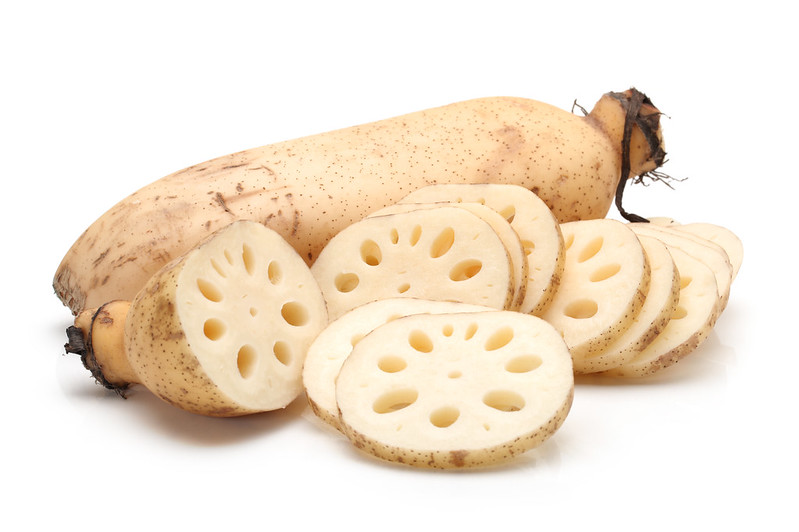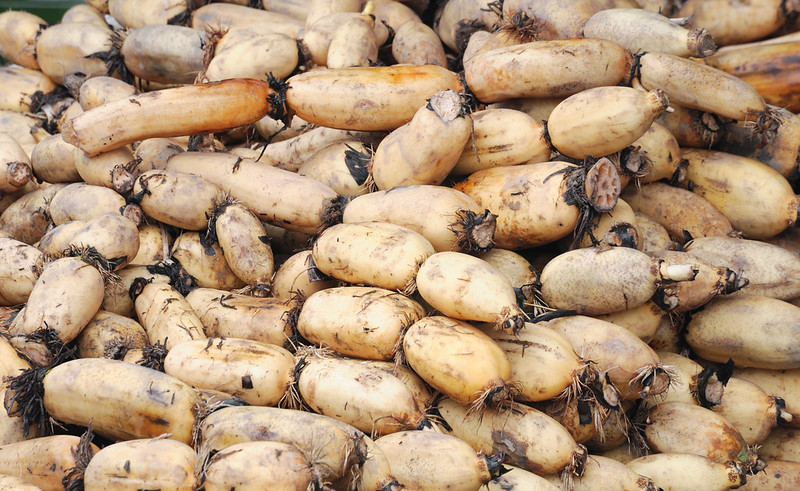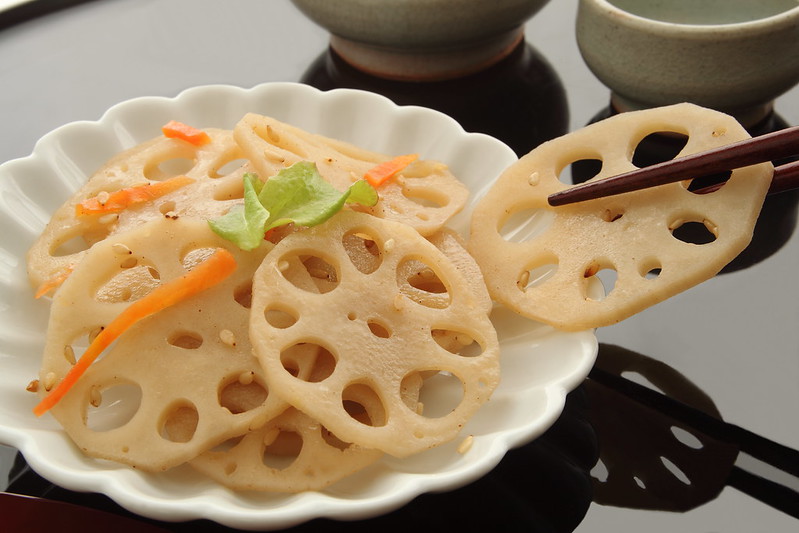
Health Benefits of Renkon
The lotus is often used to synbolize divine beauty. Most Asian deities are depicted seated on a lotus flower. In Buddhism, a lotus represents purity of the body, speech, and mind. Legend also tells us that Gautama Buddha was born with the ability to already walk, and wherever he stepped, lotus flowers blossomed. The lotus plant is considered versatile because aside from its aesthetic characteristics and spiritual representation, most of the plant (flower, leaves, seeds, and root) is edible and can be used in various culinary preparations. In Japan, the lotus root (a rhizome), renkon in Japanese, is used in many cooking techniques: pickled, stir fried, an ingredient for salads, and as a dry snack food.
Renkon is largely found underwater. It is similar in shape to a long squash. The outside has a thick reddish brown peel. As you remove the thick covering, you are left with a white interior with intricate holes that look almost like lace. Renkon is slightly sweet and crunchy in texture similar to a water chestnut. Aside from the many gastronomic delights of renkon, it is also known to have astounding health benefits.
Renkon is rich in macronutrients.
A 100-gram serving of lotus root contains only 74 calories. But it packs in 3 grams of protein (5% of the required daily value), 17 grams of carbohydrate (6% of the required daily value), and 5 grams of fiber (25% of the required daily value).
Renkon is full of vitamins.
A single serving of lotus root provides the body with 44 mg of vitamin C (73% of the daily required) value. Renkon also provides 0.3 mg of vitamin B-6 and 0.2 mg of riboflavin, (13% of the required daily value for each), and it also contains 0.2 mg of thiamine (11% of the required daily value). Vitamin C is an antioxidant that aids in freeing the body from cell damaging free radicals. It also helps in generating new cells and is important in healing wounds. B vitamins are responsible for transforming the food we eat into energy as well as keeping the skin, liver, hair, and eyes healthy.
Kimpira Renkon
Renkon is packed with minerals.
A serving of lotus root contains 1.2 mg of iron and 23 mg of magnesium (6% of the required daily amount), 556 mg of potassium (16% of the required daily value), and 100 mg of phosphorus (10% of the required daily value). Potassium aids the body in controlling blood pressure and is important for maintaining muscle and nerve functions. Phosphorus is essential in creating DNA and strengthening the teeth and bones as well as repairing the body’s cells. Iron is necessary for creating red blood cells and transporting oxygen while magnesium helps the body keep blood sugar levels in check and allows the body to maintain normal nerve, muscle, and immune functions.
Renkon helps relieve hay fever.
Another important benefit of renkon is the presence of tannins (a type of biomolecule) and polyphenols that are effective in relieving hay fever. With spring in full bloom in Japan, the lotus root will be heaven sent.
